Finite Element Analysis and Support Vector Regression-Based Optimal Design to Minimize Deformation of Indoor Bicycle Handle Frame Equipped with Monitor
Abstract
1. Introduction
2. FEA and Optimal Design
2.1. Bicycle Handle Modeling with Monitor
2.2. Structural Analysis According to the Load
2.2.1. Boundary and Load Conditions
2.2.2. Effective Stress Results According to Load Conditions
2.3. Optimal Design of Bicycle Handle Frame with Monitor
2.3.1. Design Variables
2.3.2. Optimal Design Using SVR
3. Experimental Results
4. Conclusions
- (1)
- The load applied to the bicycle handle frame was divided into a total of four cases to perform the structural analysis. Among the four load conditions, cases with a standard safety rate below 2.0 were selected, and those two load cases were considered for optimal design.
- (2)
- Five design variables that affected the minimization of effective stress were assigned, and a total of 32 analyses were performed using a five-factor, two-level factor arrangement method. The results of the sub-analysis were derived, and their consequent sensitivity analysis and correlation with the maximum effective stress, which was the objective function, were confirmed through the Pareto chart. All five design variables were found to be significant. Therefore, 125 datasets, at five factors and three levels, were obtained and compared using regression equation and prediction equation with SVR.
- (3)
- Using the SVR of the radial basis function kernel method, the learning model with the highest accuracy was derived by obtaining the optimal values of C, ε, and γ, which represented penalty values for the error interval. Herein, the mean square error was used for comparing the accuracy, and the best results were obtained when C = 100, ε = 0.001, and γ = 1.
- (4)
- Upon comparing the SVR prediction model with the existing regression equation through R2 values, the accuracy of the SVR model was found to be higher. Accordingly, an optimal design was conducted to secure the safety and rigidity of the monitor handle using the SVM prediction model. The design variable values wherein the effective stress from the model was minimized were x1 = 120°, x2 = 90°, x3 = 30 mm, x4 = 0 mm, and x5 = 4.8 mm. Consequently, the effective stress was reduced by up to 80% compared with the initial model. FEA was conducted by redesigning the model with the obtained values of the design variables, and the results obtained were similar to the predicted values. Thus, the reliability of this study was confirmed.
Author Contributions
Funding
Institutional Review Board Statement
Informed Consent Statement
Data Availability Statement
Conflicts of Interest
References
- Han, S.J.; Kim, S.; Cho, J.; Koo, K. Ergonomic evaluation of indoor bike coordinated with virtual images. J. Digit. Converg. 2017, 157, 443–451. [Google Scholar]
- Lee, H.; Park, S.W.; Shin, S.Y.; Lee, S.Y. Development of structural analysis automation system for bicycle design. In Proceedings of the KSME 2012 Spring Annual Conference, Deajeon, Korea, 26–27 June 2012; pp. 11–12. [Google Scholar]
- Khutal, K.; Kathiresan, G.; Ashok, K.; Simhachalam, B.; Jebaseelan, D.D. Design validation methodology for bicycle frames using finite element analysis. Mater. Today-Proc. 2020, 22, 1861–1869. [Google Scholar] [CrossRef]
- Devaiah, B.B.; Purohit, R.; Rana, R.S.; Parashar, V. Stress analysis of a bicycle frame. Int. J. Eng. Sci. Technol. 2018, 5, 18920–18926. [Google Scholar] [CrossRef]
- Covil, D.; Bdegg, S.; Elton, E.; Milne, M.; Morris, R.; Katz, T. Parametric finite element analysis of bicycle frame geometries. Procedia Eng. 2014, 72, 441–446. [Google Scholar] [CrossRef]
- Khande, H.A.; Narwade, P.A. Structural analysis of two wheeler handlebar. Int. J. Adv. Sci. 2014, 2, 2347–4289. [Google Scholar]
- Yoon, S.h.; Kwon, J.h.; Kim, C. Implementation of a body weight distribution measurement system applicable to static bicycle fitting. J. Sens. Sci. Technol. 2018, 27, 242–248. [Google Scholar]
- Jeong, S.; Park, S.; Choi, D.; Yoon, G.H. Development of topology optimization method considering static failure theories of ductile and brittle materials. In Proceedings of the KSME 2011 Fall Annual Conference, Daegu, Korea, 2–4 November 2011; pp. 531–535. [Google Scholar]
- Ehrgott, M. Vilfredo Pareto and multi-objective optimization. Doc. Math. 2012, 447–453. [Google Scholar]
- Zgheib, W.A.; Barbar, A.M. A study using support vector machines to classify the sentiments of tweets. Int. J. Comput. Appl. 2017, 170, 8–12. [Google Scholar]
- Drucker, H.; Burges, C.J.C.; Kaufman, L.; Smola, A.; Vapnik, V. Support vector regression machines. Adv. Neural Inf. Process. Syst. 1997, 9, 155–161. [Google Scholar]
- Vapnik, V. Three remarks on the support vector method of function estimation. In Advances in Kernel Methods; MIT Press: Cambridge, MA, USA, 1999; pp. 25–41. [Google Scholar]
- Sci-Kit-Learn. 2020. Available online: https://scikit-learn.org/stable/auto_examples/svm/plot_svm_regression (accessed on 29 December 2021).
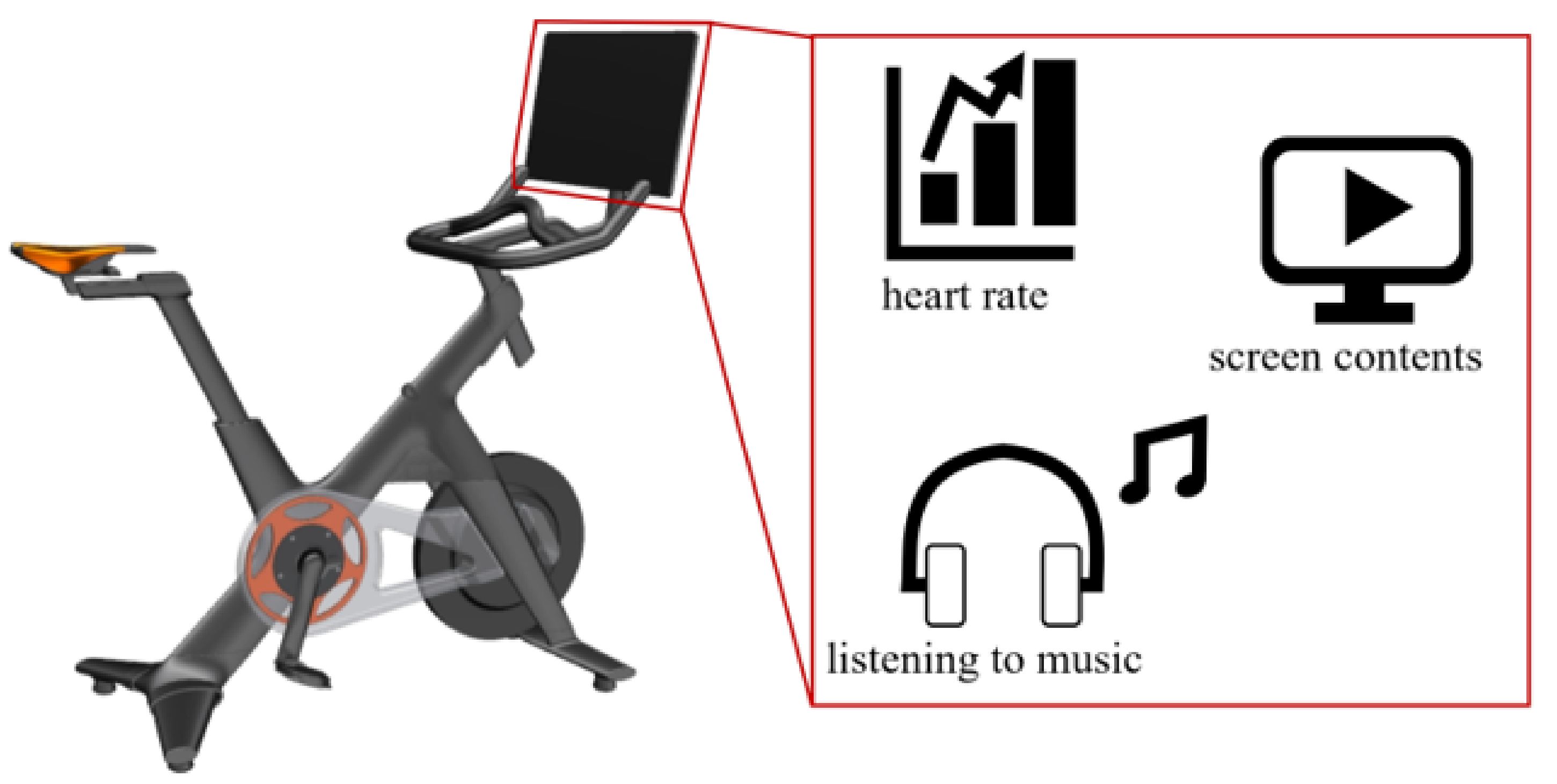
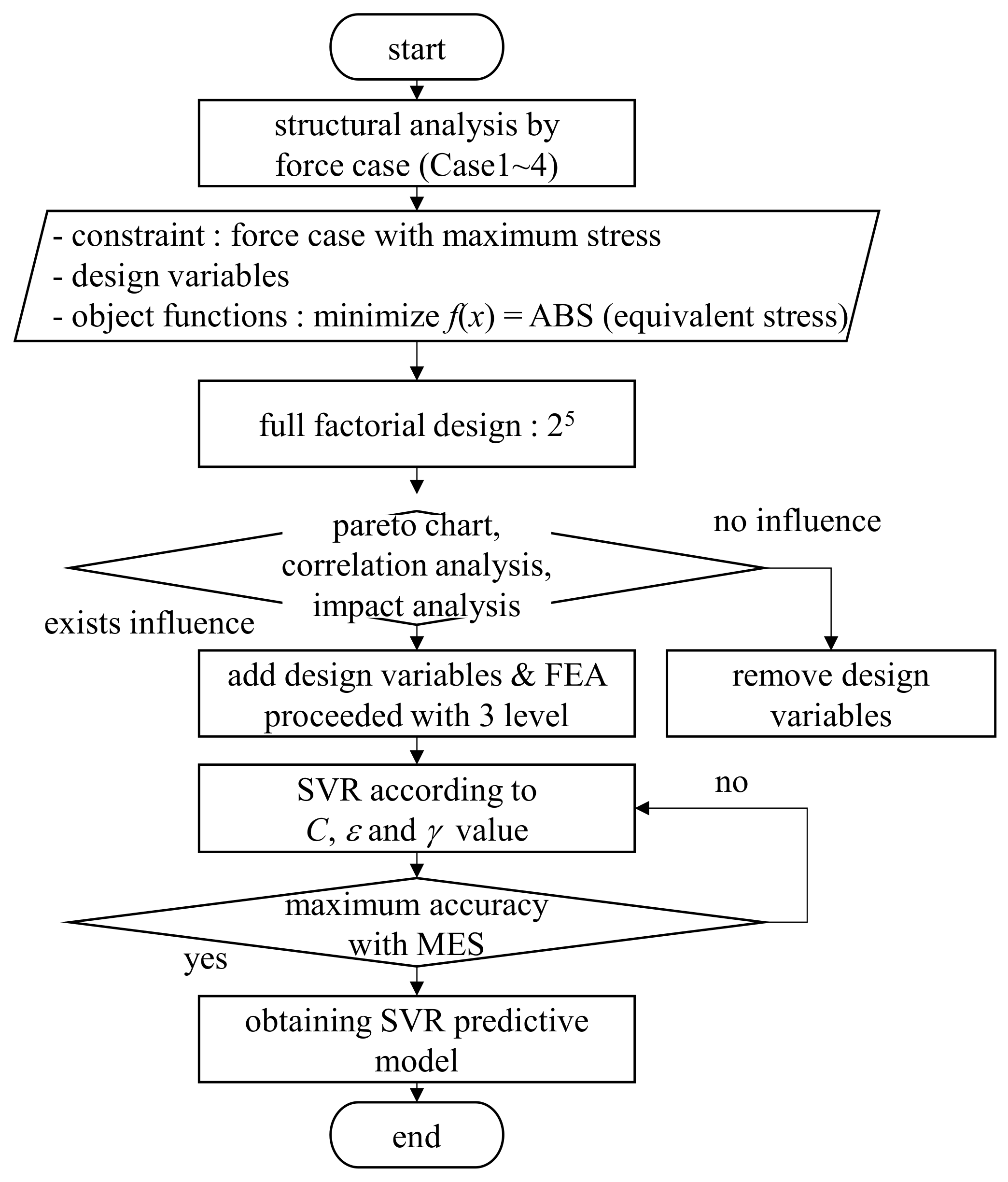
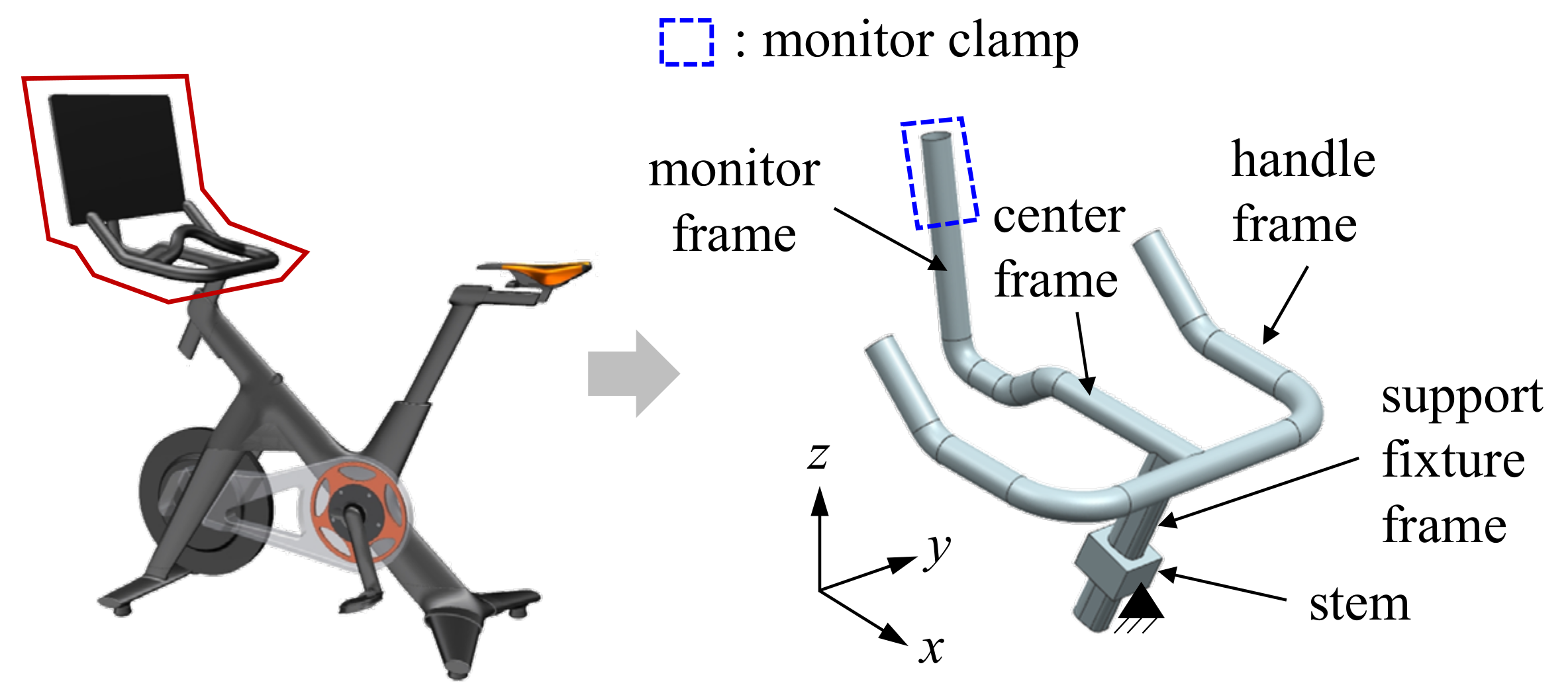

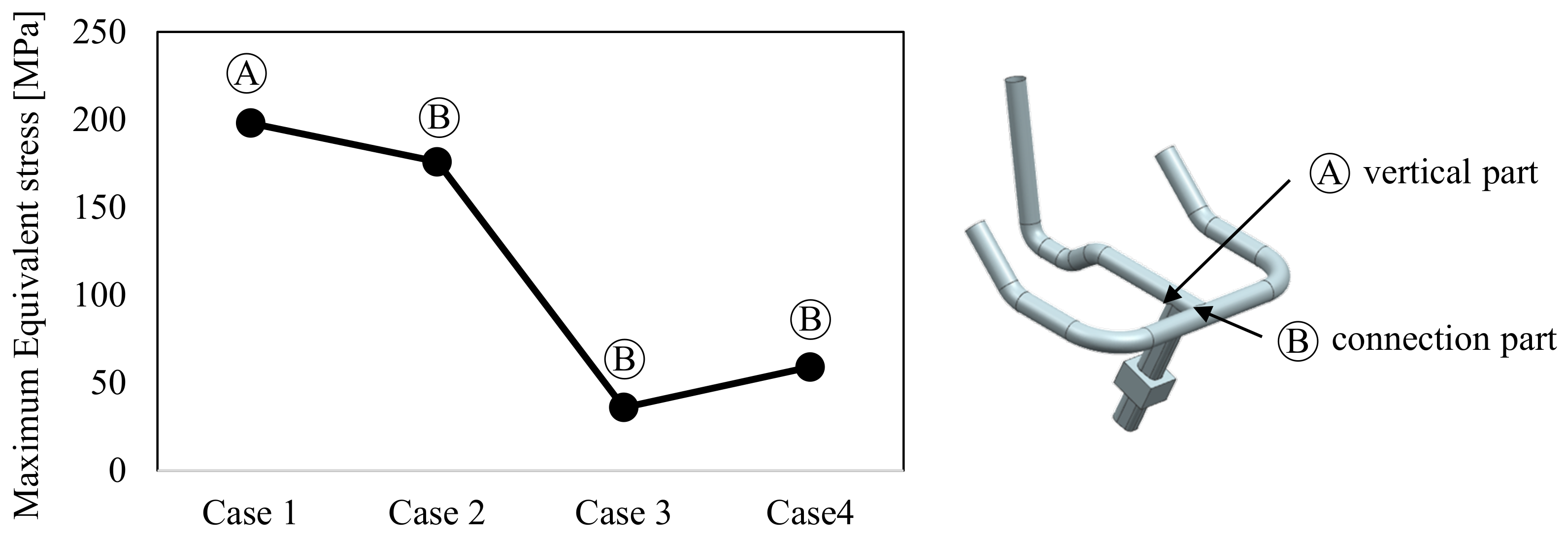


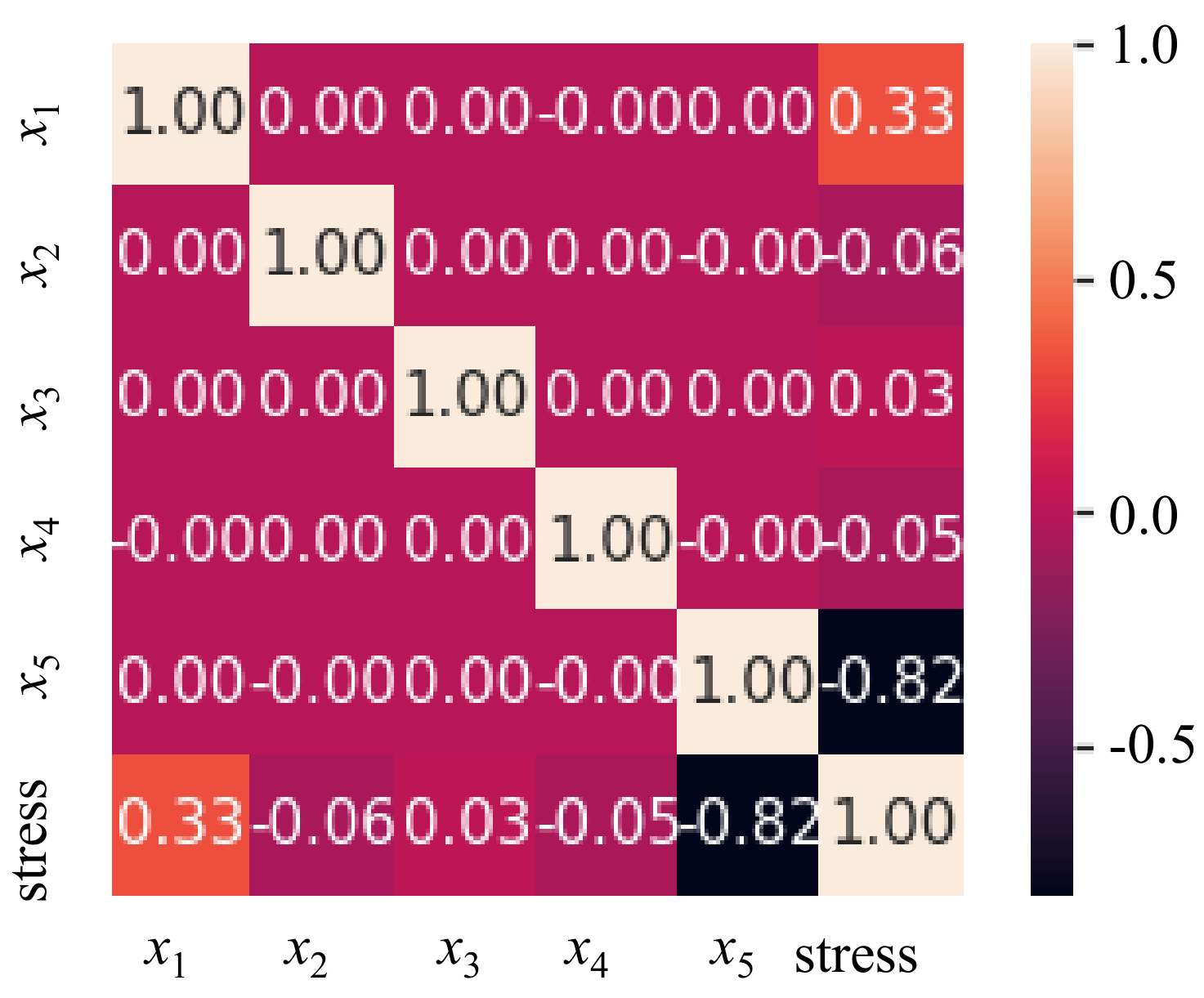
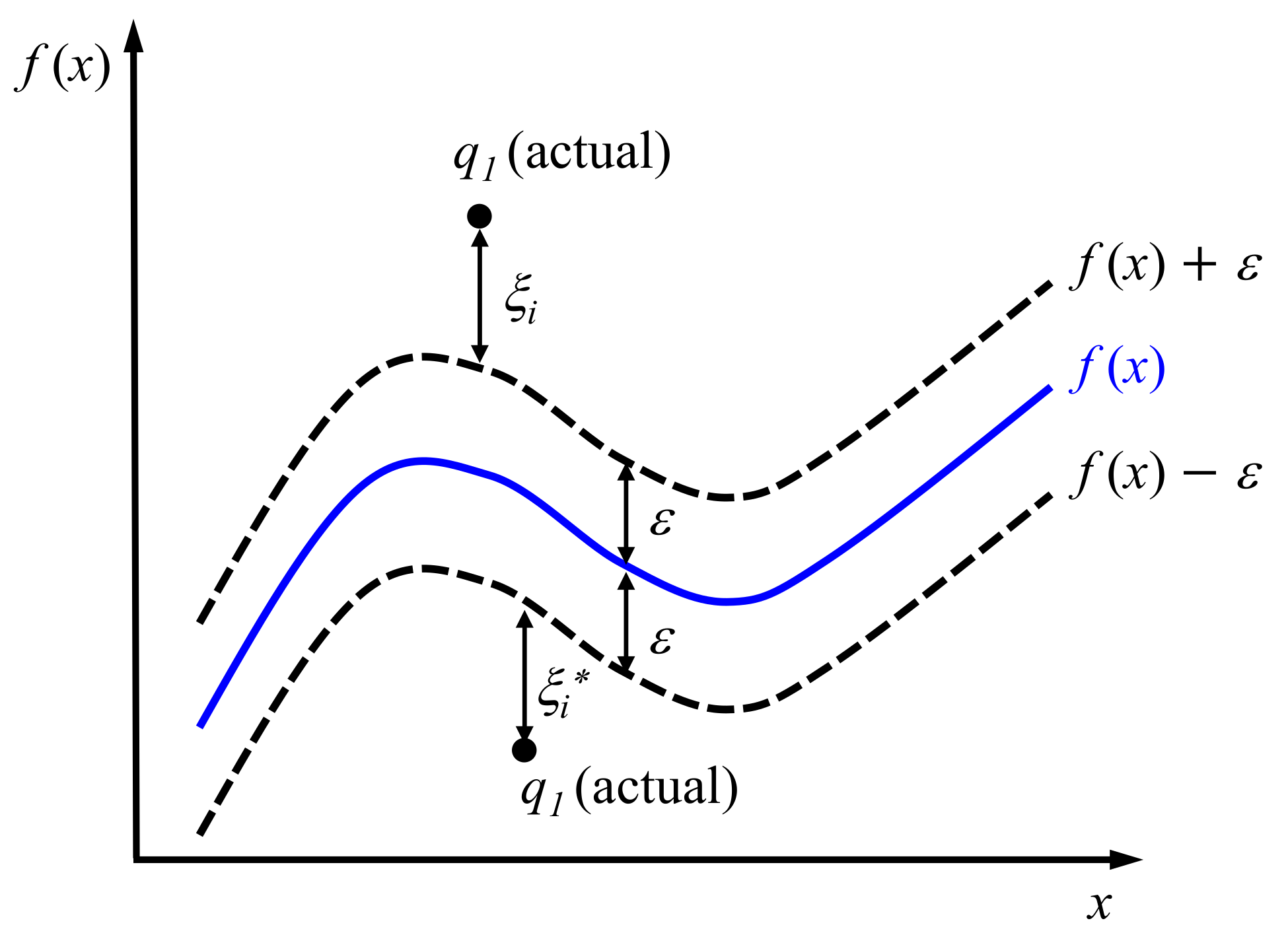

| Mechanical Properties | Value |
|---|---|
| FEA Material Models | Isotropic Linear |
| Young’s Modulus [MPa] | 71,000 |
| Poisson’s Ratio [-] | 0.33 |
| Tensile Ultimate Strength [MPa] | 310 |
| Tensile Yield Strength [MPa] | 280 |
| Design Variables | x1, x2, x3, x4, x5 |
|---|---|
| objective functions | minimize f(x) = ABS (equivalent stress) |
| constraints | 120° ≤ x1 ≤ 180° |
| 90° ≤ x2 ≤ 130° | |
| 30 mm ≤ x3 | |
| 0 mm ≤ x4 ≤ 100 mm | |
| contact of stem and support fixture frame |
| 1 | |
| 10 | |
| 100 | |
| 1 | |
| 10 | |
| 100 | |
| 1 | |
| 10 | |
| 100 |
| R2 | MSE | |||
|---|---|---|---|---|
| 1 | 0.001 | 0.01 | 0.774618 | 1108.673 |
| 0.1 | 0.952339 | 234.4494 | ||
| 1 | 0.972326 | 136.1297 | ||
| 0.01 | 0.01 | 0.773669 | 1113.338 | |
| 0.1 | 0.952469 | 233.8078 | ||
| 1 | 0.972222 | 136.6425 | ||
| 0.1 | 0.01 | 0.773267 | 1115.316 | |
| 0.1 | 0.947284 | 259.3131 | ||
| 1 | 0.962545 | 184.2419 | ||
| 10 | 0.001 | 0.01 | 0.892491 | 528.8427 |
| 0.1 | 0.990984 | 44.34811 | ||
| 1 | 0.999999 | 0.005441 | ||
| 0.01 | 0.01 | 0.892264 | 529.9624 | |
| 0.1 | 0.991071 | 43.92448 | ||
| 1 | 0.999901 | 0.487326 | ||
| 0.1 | 0.01 | 0.888727 | 547.3592 | |
| 0.1 | 0.989523 | 51.5357 | ||
| 1 | 0.990298 | 47.7243 | ||
| 100 | 0.001 | 0.01 | 0.940883 | 290.8004 |
| 0.1 | 0.998267 | 8.526889 | ||
| 1 | 0.999999 | 0.005441 | ||
| 0.01 | 0.01 | 0.941529 | 287.6255 | |
| 0.1 | 0.998556 | 7.104295 | ||
| 1 | 0.999901 | 0.487326 | ||
| 0.1 | 0.01 | 0.94643 | 263.5146 | |
| 0.1 | 0.994346 | 27.81252 | ||
| 1 | 0.990298 | 47.7243 |
Publisher’s Note: MDPI stays neutral with regard to jurisdictional claims in published maps and institutional affiliations. |
© 2022 by the authors. Licensee MDPI, Basel, Switzerland. This article is an open access article distributed under the terms and conditions of the Creative Commons Attribution (CC BY) license (https://creativecommons.org/licenses/by/4.0/).
Share and Cite
Noh, E.; Hong, S. Finite Element Analysis and Support Vector Regression-Based Optimal Design to Minimize Deformation of Indoor Bicycle Handle Frame Equipped with Monitor. Appl. Sci. 2022, 12, 2999. https://doi.org/10.3390/app12062999
Noh E, Hong S. Finite Element Analysis and Support Vector Regression-Based Optimal Design to Minimize Deformation of Indoor Bicycle Handle Frame Equipped with Monitor. Applied Sciences. 2022; 12(6):2999. https://doi.org/10.3390/app12062999
Chicago/Turabian StyleNoh, Eunsol, and Seokmoo Hong. 2022. "Finite Element Analysis and Support Vector Regression-Based Optimal Design to Minimize Deformation of Indoor Bicycle Handle Frame Equipped with Monitor" Applied Sciences 12, no. 6: 2999. https://doi.org/10.3390/app12062999
APA StyleNoh, E., & Hong, S. (2022). Finite Element Analysis and Support Vector Regression-Based Optimal Design to Minimize Deformation of Indoor Bicycle Handle Frame Equipped with Monitor. Applied Sciences, 12(6), 2999. https://doi.org/10.3390/app12062999






